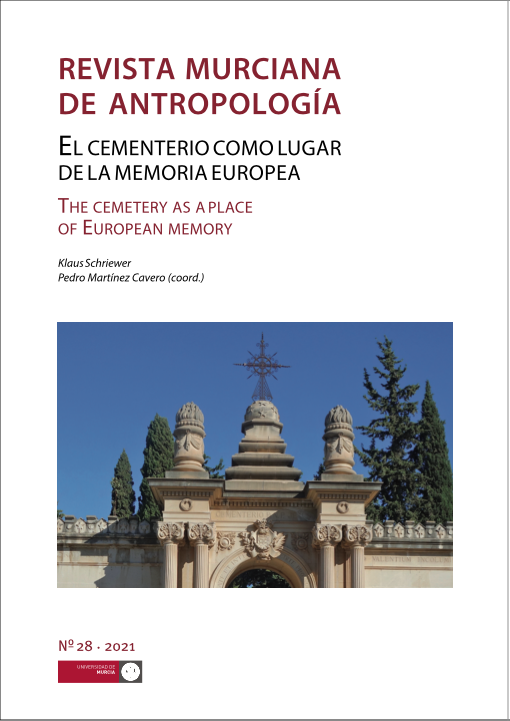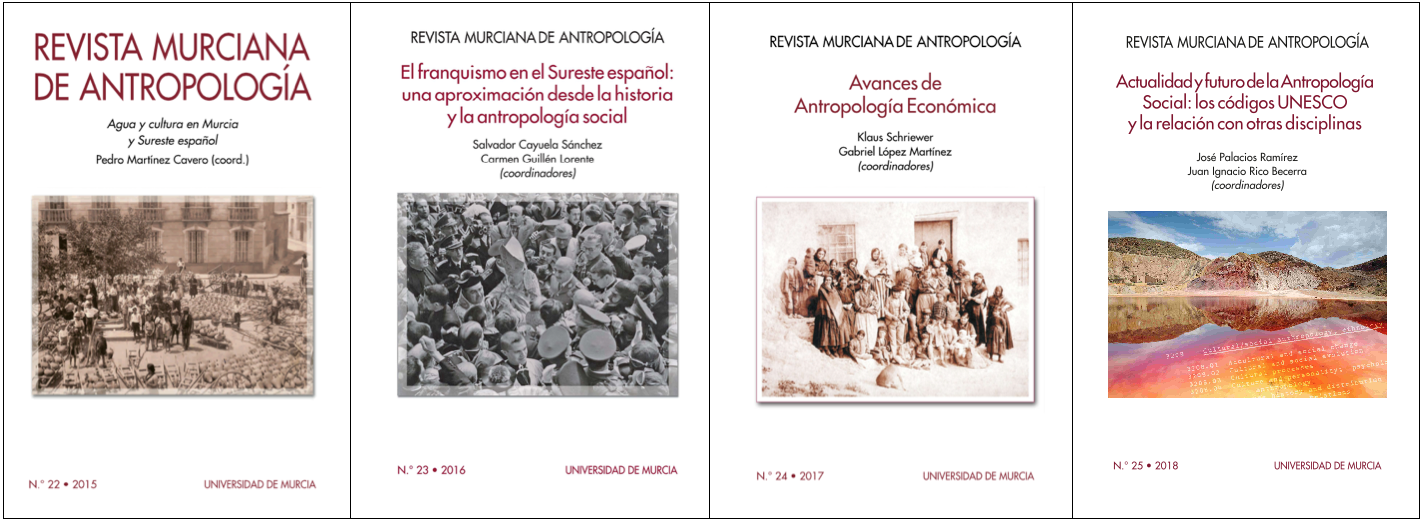Turismo del patrimonio funerario: Definiciones y principios
Resumen
En muchas grandes ciudades, el ‘primer’ cementerio decimonónico es cada vez más el núcleo del turismo de cementerios. El texto considera el ‘patrimonio funerario’ como un desarrollo relacionado pero diferente. Señala la posible relación incómoda entre el turismo de cemen- terios y patrimonio funerario, en parte debido a la falta de voluntad de asociar directamente las visitas a los cementerios con la muerte. Un turismo de cementerios mal planteado puede socavar el patrimonio tangible e intangible de los cementerios. Muchos cementerios siguen en uso y, por lo tanto, deben considerase como ‘patrimonio vivo’. En estas circunstancias, la interpretación debe reconocer a los afectados como partes interesadas relevantes, mientras que los sistemas de interpretación deben comunicar con más firmeza los diversos aspectos de la mortalidad. Poner de relieve las dinámicas de ‘funcionamiento’ del cementerio es un marco narrativo poco explorado y es necesario ser consciente de que las formas de interpre- tación pueden sesgar el esfuerzo de conservación. Asimismo, se pueden plantear cuestiones éticas. En el texto sugerimos que, como mínimo, esa interpretación debería demostrar cómo la humanidad, en todas las épocas y culturas, se ha esforzado por aceptar la muerte.
Descargas
Citas
Ashworth, G.J. & Isaac, R. K. (2015). Have we illuminated the dark? Shifting perspectives on ‘dark’ tourism. Tourism Recreation Research, 40 (3), 316-325.
Assunção, A. P. (2019). Cemetery tourism in Loures: the value of the transfiguration of a cemetery. Finisterra, 111, 37-59.
Babic, D. & Bingula, M. (2015). Interpretation at special places: Mirogoj Cemetery. Procedia – Social and Behavioural Sciences, 188, 186-192.
Babic, D., Vatan Kaptan, M. & Esquerra, C. M. (2019). Heritage literacy: a model to engage citizens in heritage management. In M. Obad Scitaroi, B. B. Obad Scitaroi & A. Mrda (eds.) Cultural urban heritage: development, learning and landscape strategies. Springer.
Bowman, M. & Pezzullo, P. C. (2010). What’s so dark about dark tourism? Tourist Studies, 9 (3), 187-202.
Brown, L. (2015). Tourism and pilgrimage: paying homage to literary heroes, International Journal of Tourism Research, 18 (2), 167-175.
Constant, C. (1994). The Woodland Cemetery: towards a spiritual landscape. Stockholm: Byggförlaget.
De Spiegeleer, C. (2019). The cemetery as symbolic battlefield in the Belgian Kulturkampf. In S. Kmec, R. Philppart & A. Reuter (eds.) Ewige ruhe? Grabkulturen in Luxemburg und den Nachbarrregion/concessions à Pérpétuité? Cultures funéraires au Luxemburg et dans les Regions Voisins. Luxemburg: CapybaraBooks.
Doyle, S. (2016). Funeral traditions and commemorative practices in Glasnevin Cemetery and Museum. In L.M. Griffith & C. Wallace (eds.), Grave matters: death and dying in Dublin 1500 to the present. Dublin: Four Courts Press.
Etlin, R. (1984). The architecture of death. Cambridge, MA: MIT.
Fischer, J. (2001). Harming and benefitting the dead. Death Studies, 25, 557-568.
Fischer, N. (1996). Vom Gottesacker zum Krematorium: eine sozialgeschichte der friedhöf in Deutschland seit dem 18. Jahrhundert. Kulterstudien: Sonderband 17.
Heathcote, E. (1999). Monument builders: modern architecture and death. Chichester: Academy Editions.
ICOMOS (2008). ICOMOS Charter for the Interpretation and Presentation of Cultural Heritage Sites. http://icip.icomos.org/downloads/ICOMOS_Interpretation_Charter_ENG_04_10_08.pdf.
ICOMOS Belgium (2015). ‘Funerary heritage in Belgium, from underesti- mation to revaluation to degredation. In C. Machat, M. Petzet & J. Zeizemer (eds.), Heritage at Risk World Report 2011-13 on Monuments and Sites in Danger. ICOMOS: Berlin.
Kensinger, N. (2020). Where I find outdoor calm and solitude in New York. Apr 2. https://ny.curbed.com/2020/4/2/21203836/new-york-coronavirus-green-wood-cemetery-brooklyn.
Lassère, M. (1991). La loi et les morts : la difficile création du cimetière général de Tours au XIXe siècle. Annales de Bretagne et des Pays de L’Ouest, 98, 303-312.
Levitt, L. (2012). Solemnity and celebrity: dark tourism experiences at Hollywood Forever Cemetery, Journal of Unconventional Parks, Tourism and Recreation Research, 4 (1), 20-25.
Light, D. (2017). Progress in dark tourism and thanatourism research: an uneasy relationship in heritage tourism. Tourism Management, 61, 275- 301.
Linden-Ward, B (1989). ‘Strange but genteel pleasure grounds’: tourist and leisure uses of nineteenth-century rural cemeteries. In R. E. Mayer (ed.), Cemeteries and gravemarkers: voices of American culture. Logan, UT: Utah State University Press.
Malone, H. (2017). Architecture, death and nationhood: monumental cemeteries of Nineteenth-Century Italy. London: Routledge.
Nielsen, A.P. & Groes, L. (2014). Ethnography inside the walls: studying the contested nature of the cemetery. Ethical Praxis in Industry Conference Proceedings, 108-118.
Ortiz, J. A. (2018). Quan la mort i l’art es troben: el patrimony funerary a Catalunya. Revista d’Etnologia de Catalunya, 43, 132-143.
Pécsek, B. (2015). City cemeteries as cultural attractions: towards an under- standing of foreign visitors’ attitudes at the national graveyard in Budapest. DETUROPE: The Cultural European Journal of Regional Development and Tourism, 7 (1), 41-61.
Plibersek, L. & Vrban, D. (2019). Cemeteries as cultural heritage: implementing the model of cemeteries-cultural heritage as education environment. Mednarodna Inovativno Poslovanje = Journal of Innovative Business and Management, 11 (2), 22-31.
Potter, E. W. & Boland, B. M. (1992). Guidelines for Evaluating and Registering Cemeteries and Burial Places. National Register Bulletin 41: US Department of the Interior.
Poulios, I. (2004). Discussing strategy in heritage conservation: living heritage approach as an example of strategic innovation. Journal of Cultural Heritage and Sustainable Development, 4 (1), 16-34.
Rojek, C. (1993). Ways of escape: modern transformations in leisure and travel. Basingstoke: Macmillan.
Rugg, J. (2006). Lawn cemeteries: the emergence of a new landscape of death, Urban History, 33 (2), 213-233.
Rugg, J. (2017). Taken ‘as read’: locating death in the rhetoric of cemetery conservation in England. In M. Frihammar & H. Silverman (eds.), Heritage of death: landscapes of emotion, memory and practice. London: Routledge.
Rugg, J. (2018). Consolation, individuation and consumption: towards a theory of cyclicality in English funerary practice, Cultural and Social History, 15 (1), 61-78.
Rugg, J. (2019). Secularidad y espacios enterramiento en la Inglaterra del siglo XIX. Revista Murciana de Antropología, 26, 33-54.
Sears, J. F. (1989). Sacred places: American tourist attractions in the 19th Century. Oxford: Oxford University Press.
Seaton, T. North, M. & Gajda, G. (2015). Last resting places? Recreational spaces or thantourism attractions – the future of historic cemeteries and churchyards in Europe. In S. Gammon & S. Elkington (eds.), Landscapes of leisure: space, place and identities. Palgrave: Basingstoke.
Sloane, D. C. (1995). The last great necessity: cemeteries in American history. Baltimore, MD: John Hopkins University Press.
Smith, L. (2006). Uses of heritage, London: Routledge.
Sobotka, S. & D ugozima, A. (2015). Evaluation and development opportunities of the disused Lutheran cemeteries within the Mankulinskie and Pisz Forest Divisions for thanatourism, Tourism, 25 (1), 67-75.
Stone, P. R. (2006). A dark tourism spectrum: towards a typology of death and macarbre related tourist sites, attractions and exhibitions, Tourism, 54 (2), 145-160.
Tanas, S. (2004). The cemetery as a part of the geography of tourism. Turyzm, 14 (2), 72-87.
Tanas, S. (2006). The meaning of ‘deathspace’ in cultural tourism. Turyzm, 16 (2), 145-151.
Tanas, S. (2013). Tourism ‘death space’ and thanatourism in Poland’. Current Issues of Tourism Research, 13 (1), 22-27.
Tarrés Chomorro, S. (2018). Funerary heritage analysis: analysis introduction notes. Catalonia Journal of Ethnology, 43, 66-77.
Strang, J. (1831). Necropolis Glasguensis, with Observations on Ancient and Modern Tombs and Sepulture. Glasgow: Atkinson and Co.
Timothy, D. J. (2018). Making sense of heritage tourism: research trends in a maturing field of study. Tourism Management Perspectives, 25, 177-180.
Tomasevic, A. (2018). Cemeteries as tourist attractions. Touristicko Poslovanje, 21, 13-24.
White, J. (2018). List of registered cemeteries. London: Historic England.
Yan Lai, K., Sarkar, C., Ziwen, S. & Scott, I. (2020). Are greenspace attributes associated with perceived restorativeness? A comparative study of urban cemeteries and parks in Edinburgh, Scotland, Urban Forestry and Greening.
Derechos de autor 2021 Revista Murciana de Antropología

Esta obra está bajo una licencia internacional Creative Commons Atribución-CompartirIgual 4.0.
Las obras que se publican en esta revista están sujetas a los siguientes términos:
1. El Servicio de Publicaciones de la Universidad de Murcia (la editorial) conserva los derechos patrimoniales (copyright) de las obras publicadas, y favorece y permite la reutilización de las mismas bajo la licencia de uso indicada en el punto 2.
2. Las obras se publican en la edición electrónica de la revista bajo una licencia Creative Commons Reconocimiento-CompartirIgual 4.0 Internacional. Se pueden copiar, usar, difundir, transmitir y exponer públicamente, siempre que: i) se cite la autoría y la fuente original de su publicación (revista, editorial y URL de la obra); ii) se mencione la existencia y especificaciones de esta licencia de uso.
3. Condiciones de auto-archivo. Se permite y se anima a los autores a difundir electrónicamente las versiones pre-print (versión antes de ser evaluada) y/o post-print (versión evaluada y aceptada para su publicación) de sus obras antes de su publicación, ya que favorece su circulación y difusión más temprana y con ello un posible aumento en su citación y alcance entre la comunidad académica. Color RoMEO: verde.














